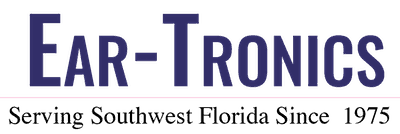Hearing aids are transformative devices that help millions of people reconnect with the sounds of life. As these devices continue to evolve in technology and design, one aspect remains pivotal: the batteries that power them. The future of hearing aid batteries is shaping up to be brighter, with innovations focused on enhancing convenience, performance, and sustainability. This exciting progress could make hearing aids more effective and user-friendly than ever before.
Why Battery Innovation Matters
Battery performance plays a critical role in the functionality of hearing aids. These devices rely on consistent and reliable power to deliver clear sound and maintain advanced features such as noise reduction, Bluetooth connectivity, or tinnitus masking. The size and portability of hearing aids place unique demands on batteries, requiring them to be compact while delivering long-lasting power.
For decades, disposable zinc-air batteries have been the standard. These batteries are lightweight and cost-effective, but they also come with downsides. For instance, they need frequent replacement and pose environmental concerns when discarded in large quantities. As hearing aids integrate more sophisticated technology, the demand for smarter, longer-lasting power sources has grown, driving innovation in this field.
Rechargeable Batteries
A significant shift toward rechargeable batteries is redefining expectations for hearing aid power. Modern rechargeable hearing aids typically use lithium-ion batteries, which offer several advantages over traditional disposable options.
Lithium-ion batteries can last for an entire day on a single charge, even when powering advanced features like streaming audio or wireless connectivity. The growing popularity of charging stations makes rechargeable hearing aids highly convenient, eliminating the hassle of carrying spare batteries. Additionally, these batteries are environmentally friendly. By reducing the number of disposable batteries that get thrown away, lithium-ion technology supports sustainability efforts in the hearing aid industry.
Looking ahead, improvements in battery longevity and charging speed promise to make lithium-ion technology even more appealing. Some manufacturers are also exploring alternative materials that could further boost the efficiency and safety of these batteries.
Solid-State Batteries
Another promising development in hearing aid battery technology is the potential use of solid-state batteries. Unlike lithium-ion batteries, which use liquid electrolytes, solid-state batteries rely on solid electrolytes. This innovation offers greater energy density, meaning batteries could last longer while remaining compact.
Also, solid-state batteries have enhanced safety features. Their design minimizes the risk of overheating or leaks, which is an important consideration for devices worn close to the body. Although solid-state batteries are not widely available for hearing aids yet, ongoing advancements in manufacturing and materials signal that this could soon change.
Wireless Charging and Convenience
Wireless charging is another breakthrough that is poised to revolutionize the hearing aid industry. While charging docks remain the norm for rechargeable hearing aids, new wireless charging systems are being explored. These systems could eliminate cables and external connectors, making charging more seamless than ever before.
Imagine a scenario where hearing aids could be charged by simply placing them on a pad or within proximity to compatible technology. This would mark yet another leap forward in convenience without compromising battery performance. As wireless technology advances, hearing aid manufacturers are working hard to integrate these systems into future products.
Sustainable Practices for a Greener Future
Environmental sustainability is becoming an important focus in hearing aid battery development. Traditional disposable batteries contribute to waste, and if not properly disposed of, they can release harmful chemicals into the environment.
In response to these challenges, many companies are shifting toward sustainable solutions. Rechargeable batteries reduce dependence on disposables, but efforts don’t stop there. Manufacturers are also exploring biodegradable battery materials and innovative recycling programs to ensure discarded batteries have minimal ecological impact.
As consumers increasingly prioritize eco-friendly options, hearing aid companies are likely to align their products with these values. This push toward sustainability benefits both users and the planet, creating a win-win scenario.
What Lies Ahead
Advancements in hearing aid batteries are opening up exciting possibilities. From the rise of rechargeable and solid-state batteries to the emergence of wireless charging, newer technologies are providing practical benefits while contributing to environmental initiatives. These innovations will enable hearing aids to become smaller, smarter, and more convenient for those who rely on them daily.
As hearing aid technology continues to move into the future, batteries will remain at the forefront of progress. The desire for efficiency, sustainability, and higher performance will drive further breakthroughs, creating even more opportunities to reshape the way hearing aids are powered. This is an exciting moment for both the industry and those who interact with hearing technology, signaling a future filled with promise.

